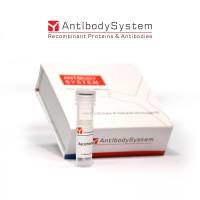Methods for Iodination of Active TGF, TGF Receptor Crosslinking and Immunoprecipitation of TGF-Receptor Complexes
互联网
915
Radioiodinated transforming growth factors ( TGF-βs) are critical reagents for functional studies on TGF-β ligand-receptor binding (1 –5 ), TGF-β-binding protein interactions (6 –9 ), ligand uptake, degradation and clearance (1 ,10 ,11 ), titering of TGF-β neutralizing antibodies (9 ,10 ), and for quantitation of TGF-βs by radioimmuno and radioreceptor assays (12 ,13 ). Several methods have been developed for the iodination of TGF-βs, namely chloramine T, lac-toperoxidase, and Bolton-Hunter (1 ,3 ,4 ,14 ). Although the latter method is gentler and believed to yield radiolabeled TGF-βs with greater biological activity than the first two, it is much more expensive, labor intensive and yields a poorly labeled product. Chloramine T is currently the most common method for iodination of TGF-βs, most likely because of its great efficiency of labeling. However, iodination with chloramine T can cause oxidative degradation of TGF-βs with excess treatment. For this reason, successful iodination of TGF-βs requires strict adherence to the amount of chloramine T used and the duration of treatment. Frolik et al. (1 ) have shown that three consecutive short treatments with low levels of chloramine T gives the best labeling with little oxidation of TGF-β. With the chloramine T method outlined later, all three isoforms of TGF-β can be iodinated with near-equal efficiency.









